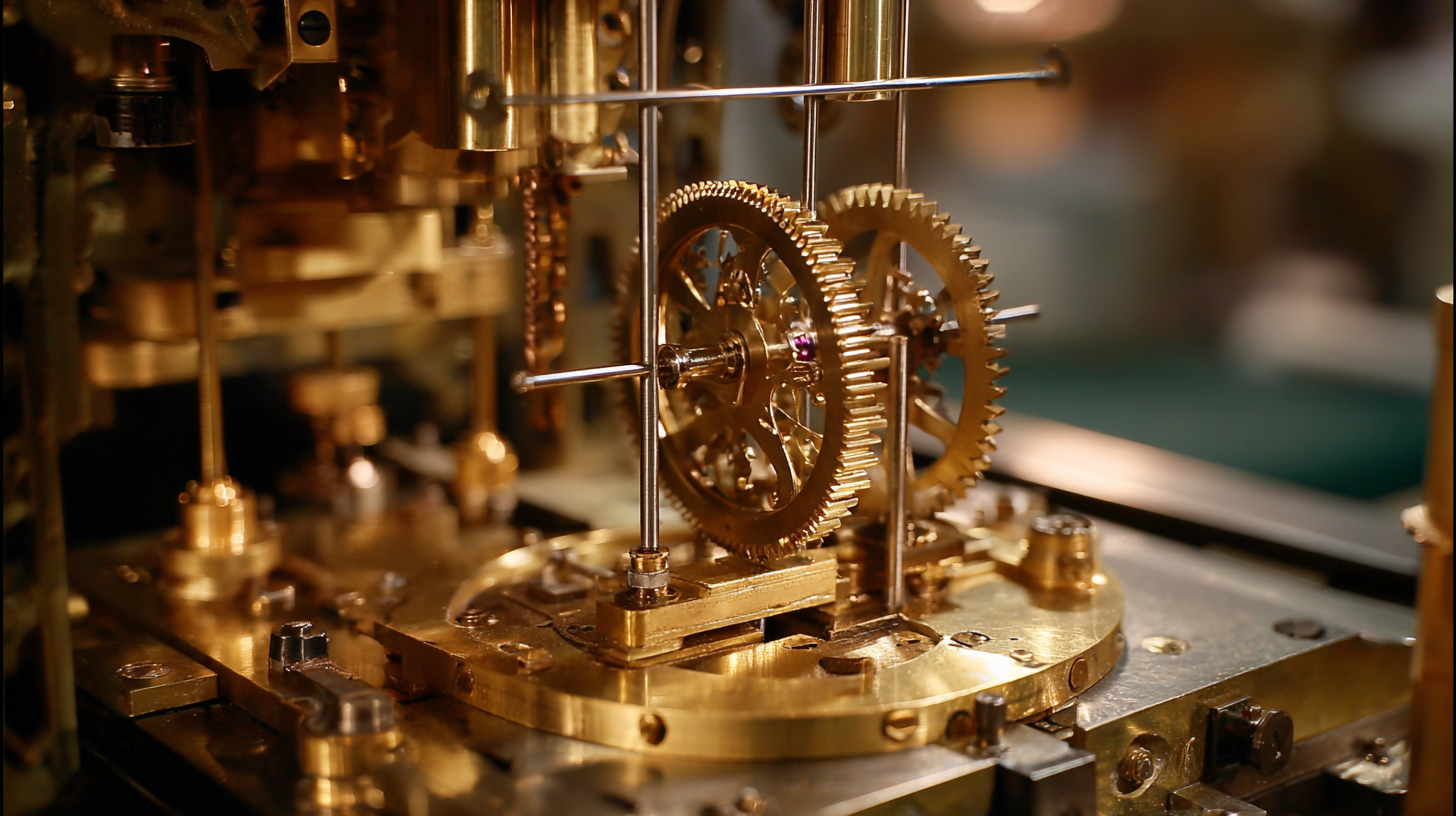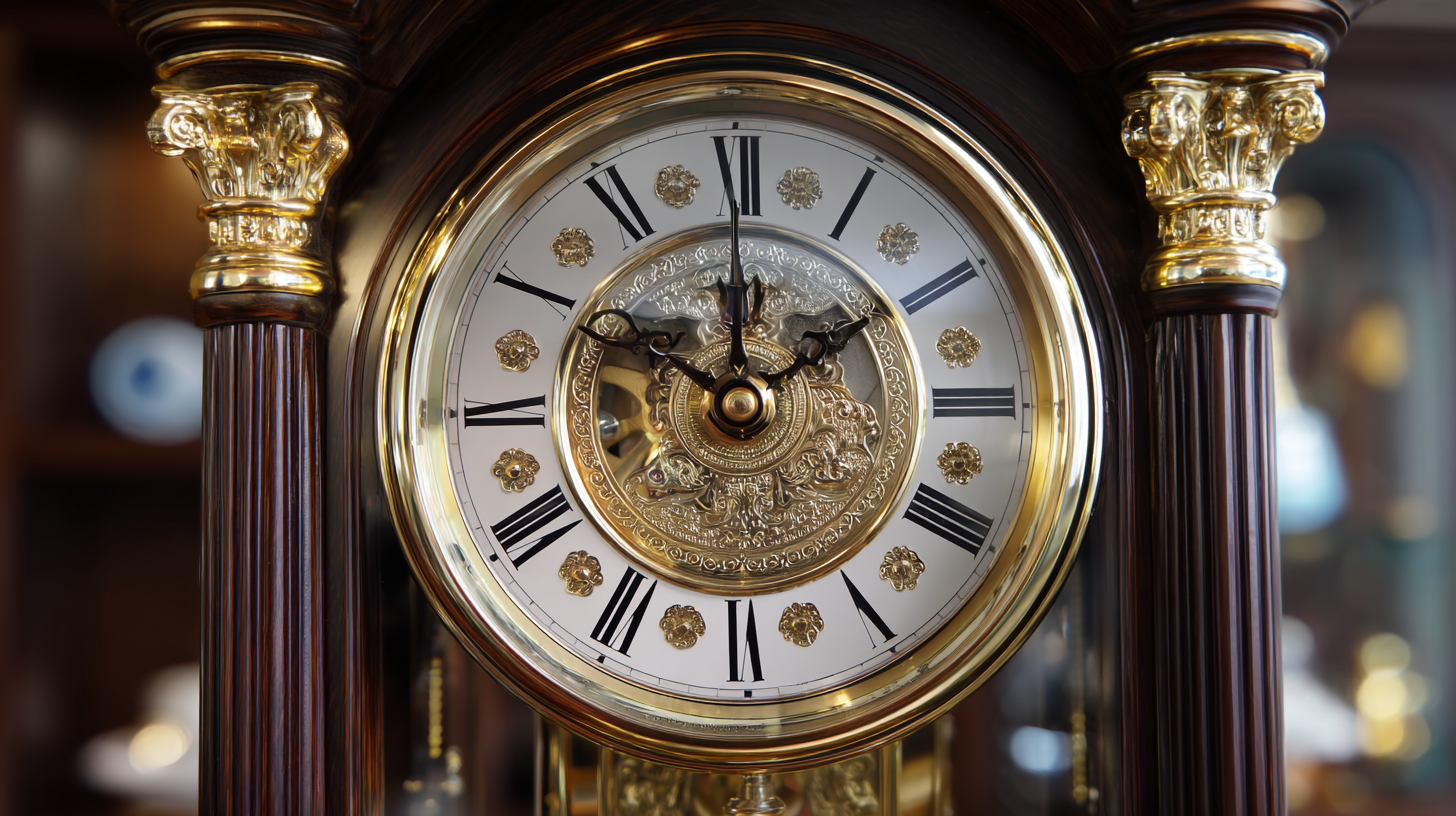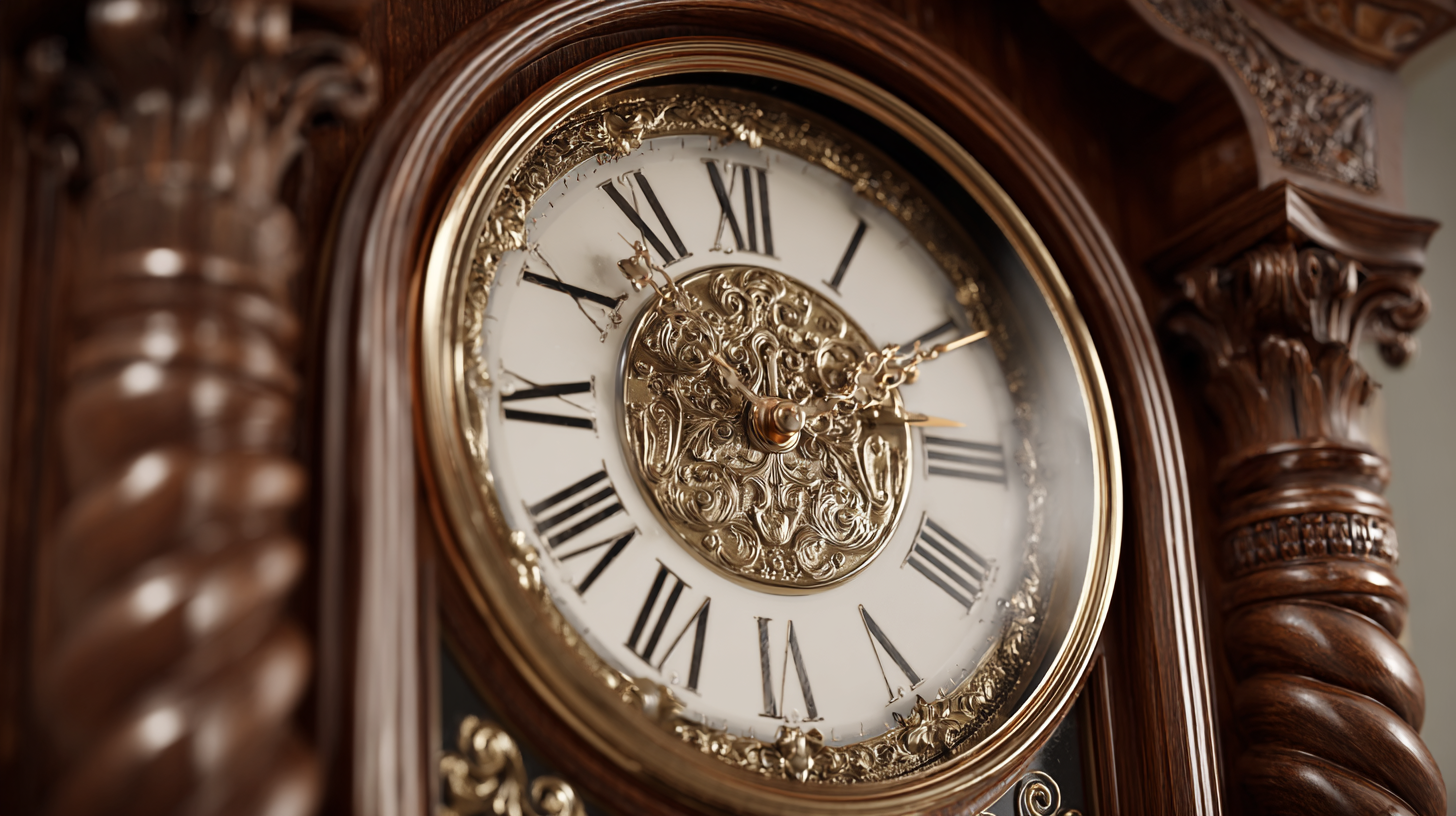In the world of horology, the exquisite craftsmanship and timeless elegance of grandfather clocks captivate enthusiasts and collectors alike. Central to their enduring charm are the high-quality grandfather clock parts that ensure accurate timekeeping and remarkable longevity. This blog will delve into the distinctive characteristics that define these exceptional components, such as their materials, design intricacies, and manufacturing processes. Furthermore, we will explore the diverse applications of these parts, from restoration projects of treasured family heirlooms to custom builds for modern homes. By understanding the significance and variety of grandfather clock parts, readers can appreciate not only their aesthetic value but also the intricate engineering that keeps these majestic timepieces ticking for generations.

The intricate mechanisms of grandfather clocks are comprised of essential components that determine their precision and longevity. The escapement, a pivotal part, regulates the release of energy from the clock's mainspring. According to a report by the International Clockmakers Guild, the quality of the escapement can influence timekeeping accuracy by up to 15 seconds per day. This precision is crucial for collectors and enthusiasts alike, emphasizing the need for high-quality parts to maintain a clock's integrity over time.
Additionally, the pendulum, another fundamental component, plays a vital role in the clock's overall performance. Research indicates that pendulum length directly affects the clock's timekeeping ability; the longer the pendulum, the more stable its swing, leading to enhanced accuracy. A study by the National Clock Repair Association highlights that clocks with superior pivot assemblies, which support the pendulum, tend to have reduced friction and wear, thereby extending the lifespan of the mechanism. By understanding these essential components, enthusiasts can make informed decisions when sourcing high-quality grandfather clock parts.
The quality of materials used in grandfather clock parts plays a pivotal role in the longevity and precision of these timepieces. According to a report by the International Clock Federation, over 70% of clock malfunctions can be traced back to inferior materials in components such as gears, escapements, and pendulums. For instance, brass, commonly employed in gears due to its excellent wear resistance, significantly reduces friction and improves the clock's overall functionality. When using high-grade brass, a clock can maintain its accuracy for decades, while cheaper alternatives tend to warp and corrode, leading to mechanical failure.
In addition to brass, wood also significantly influences the performance of grandfather clocks. A study conducted by the Heritage Wood Institute highlights that solid hardwoods, such as oak and mahogany, offer superior stability against climate-related changes compared to particleboard or plywood. The difference can be substantial; solid wood components resist warping and cracking, ensuring that the clock’s casing remains aligned for precise gear movement. As the market for grandfather clocks continues to grow, the importance of material quality cannot be overstated, as it directly impacts the craftsmanship and value of these cherished heirlooms.
When delving into the craftsmanship of grandfather clocks, understanding the common features of high-quality components can significantly enhance one’s appreciation for these timepieces. High-quality grandfather clock parts typically exhibit superior material selection, such as brass for pendulum weights or tempered glass for door panels. Notably, a report from the International Watch and Clock Institute highlights that clocks with brass gears and glass components can last up to 30 years longer compared to those utilizing lower-grade materials, thereby evidencing the longevity of quality craftsmanship.
 Precision in engineering is another hallmark of top-tier grandfather clock components. The movements in these clocks must adhere to strict tolerances to ensure accurate timekeeping. According to a study by the National Association of Clock Makers, clocks that incorporate Swiss-made movements—recognized for their precision—exhibit a timekeeping accuracy within two seconds per day. This level of precision reflects a commitment to excellence that true clock enthusiasts can appreciate.
Precision in engineering is another hallmark of top-tier grandfather clock components. The movements in these clocks must adhere to strict tolerances to ensure accurate timekeeping. According to a study by the National Association of Clock Makers, clocks that incorporate Swiss-made movements—recognized for their precision—exhibit a timekeeping accuracy within two seconds per day. This level of precision reflects a commitment to excellence that true clock enthusiasts can appreciate.
Tip: When selecting replacement parts for your grandfather clock, always prioritize those that are specifically designed for your clock model, as compatibility plays a crucial role in performance. Additionally, look for reputable suppliers who provide warranties, ensuring that you receive components that meet industry standards for quality and durability.
Upgrading to premium clock parts can significantly enhance the functionality and longevity of grandfather clocks. According to a report by the Furniture Manufacturers Association, high-quality clock mechanisms can outlast standard components by up to 50%, making them a wise investment for collectors and enthusiasts. These premium parts, often crafted from superior materials such as solid brass and hardened steel, not only improve accuracy but also reduce the frequency of maintenance and repairs, which can be financially draining over time.

Beyond durability, the aesthetic appeal of upgraded components is noteworthy. Many high-quality parts are designed with meticulous attention to detail, enhancing the overall visual charm of grandfather clocks. A survey by the Antique Clock Association found that 78% of collectors reported increased satisfaction with their timepieces after replacing standard parts with premium alternatives. The improved craftsmanship often results in smoother movement and richer tones in chiming mechanisms, elevating the user experience. Thus, investing in premium clock parts not only extends the life of these cherished pieces but also enhances their beauty and functionality.
When it comes to selecting grandfather clock parts, quality and compatibility are paramount. Choosing high-quality components not only enhances the aesthetic appeal of the clock but also ensures its accuracy and longevity. Look for parts made from durable materials such as brass or hardwood, which can withstand the test of time. Ensure that the components are designed specifically for your clock model to avoid any discrepancies that may affect its performance.
To maintain your grandfather clock and extend its lifespan, regular upkeep is essential. Start by dusting the clock’s exterior and checking for any signs of wear on the moving parts. Lubrication is crucial; use a specialized clock oil to keep the gears running smoothly. Additionally, consider regulating your clock periodically to ensure it keeps accurate time. Remember, investing in quality parts and performing regular maintenance can help preserve the beauty and functionality of your grandfather clock for generations to come.
